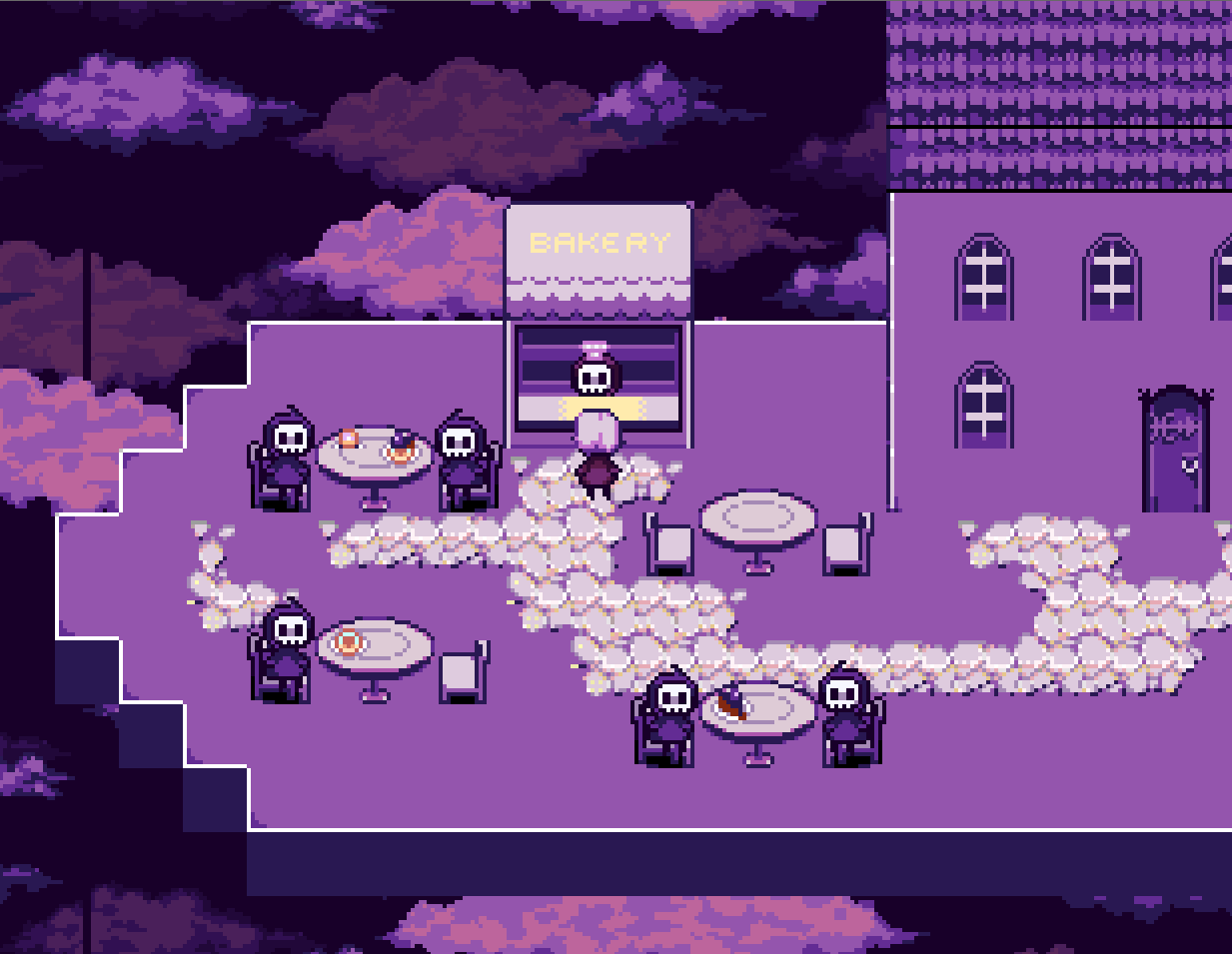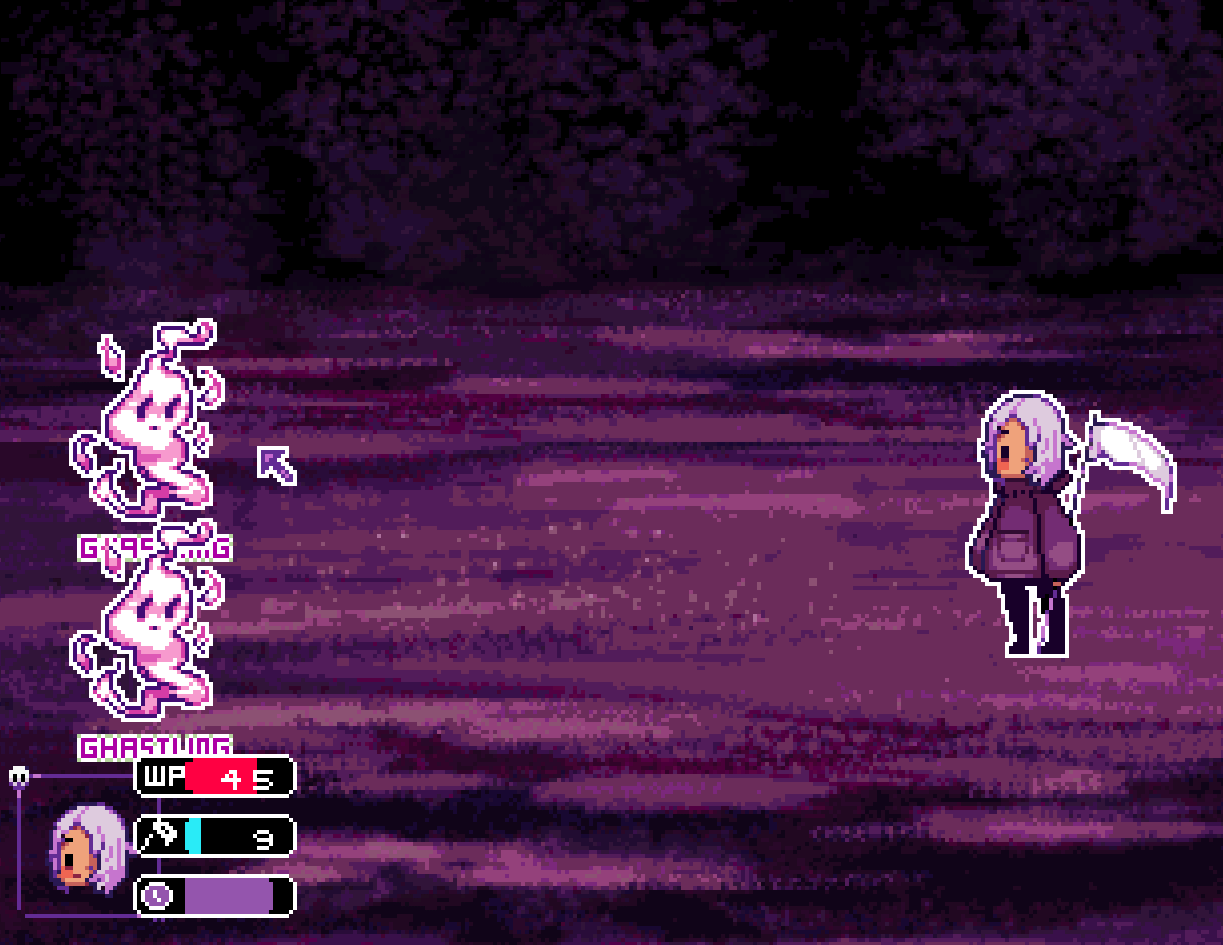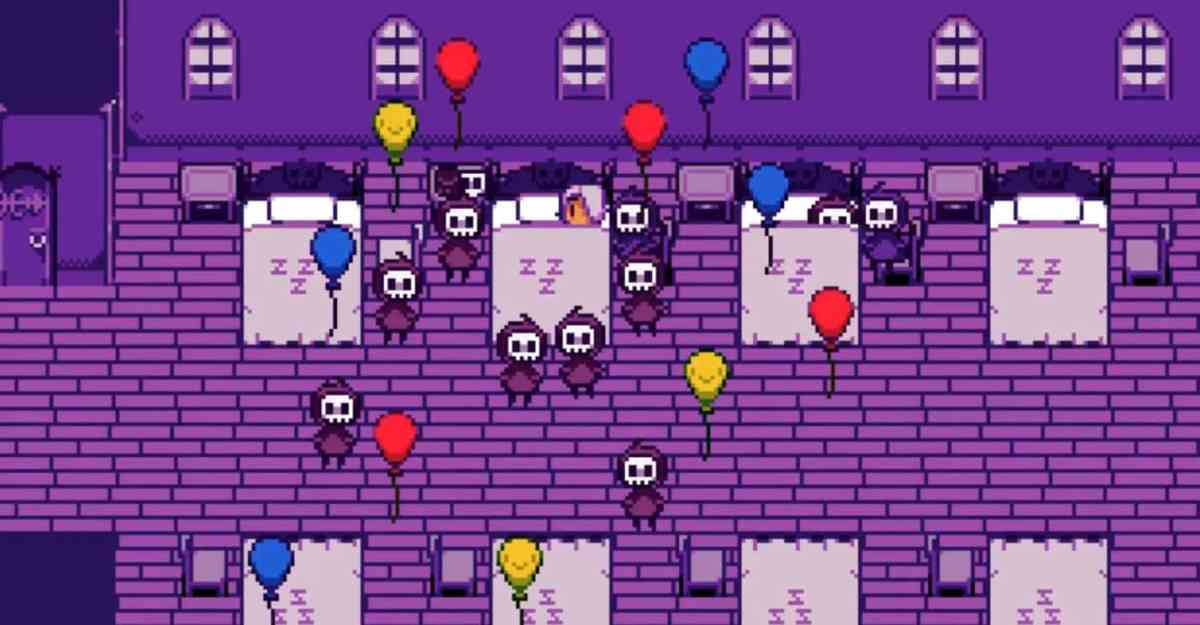Undertale has had far-reaching effects on game development in a wide variety of areas, but my favorite side effect of the game’s success is the emergence of short role-playing games. In the time that a Final Fantasy has run you through the basics of combat and perhaps burned down a protagonist’s home village, these zippy RPGs have told an entire, satisfying tale. Free game Grimm’s Hollow is an immaculate execution of the brief RPG, with its enjoyable combat, charming graphics, and a heartwarming story serving as a perfect warm-up for Halloween.
Lavender wakes up extremely confused. Her bed is surrounded by balloons, but it is not her birthday. Robed figures with skeletal masks crowd around her, bidding her welcome as a new reaper. Doubting the intentions of her newly acquired friends, she slips away to search for her brother, certain that he too is lost somewhere within this strange, spirit-laden world. Slicing through aggressive ghosts with a discarded scythe, Lavender finds escaping the underworld to be a lot more complicated than she bargained for, as locating her little brother is only the first step of their journey through the darkness.
Venturing through the tale of Grimm’s Hollow is a pretty even split among dialogue, exploration, and combat. The world of the hollow is fleshed out well, a sort of purgatory where spirits try to balance out their energy. Reapers, like Lavender, have too little energy. They must harvest extra “spirit points” from various ghostly enemies who have too much, and they are often driven mad by the excess power. Only when one’s spirit points are balanced can they move on to the real afterlife and whatever secrets lie within.
This dichotomy of balancing spirit points informs every aspect of the game: a driving force for jumping into combat, the motivation behind many characters’ actions, and even playing a role in which of the multiple endings is achieved. The laser focus on a single mechanic works well, one idea deeply explored rather than several half-explained.

Fending off ghosts involves turn-based combat with a few quick-time trappings and is surprisingly difficult at first. As a fresh spirit, Lavender starts out incredibly weak, only getting through battles with the aid of health-restoring snacks. A well-timed button press increases the strength of a strike, and likewise good reflexes can help evade an attack.
Lavender does not stay weak for long, however. With each ghost defeated, the spirit points earned can be spent on Lavender’s skill tree, which can both boost her stats and teach her new moves. A wide range of moves is critical, as the many ghosts inhabiting the hollow have different strengths and weaknesses. Some are only vulnerable to a certain color of attack or need to be defeated quickly so they stop spawning friends. The enemy designs are a good indicator of what kind of strategy is needed to combat them, and an analyzing move can be utilized to identify the less obvious ones.
I encountered a rather steep difficulty curve in the early game due to the confusing design of the skill tree. I incorrectly assumed the more spread-out nodes could not be accessed until the ones near the starting point were filled in, so my Lavender had lots of different skills but absolutely no improvements to her strength and defense. Also, unlike most video game trees, the cost of each node is not reflected by its position in the web, so items in the furthest corners might be more affordable than assumed.
Once I figured out my mistake and better distributed my points, the combat became quite enjoyable, but a good hour of gameplay was spent weakly flailing against stronger opponents. A few design changes could be made to prevent other players making the same mistake I did: Maybe nodes that Lavender can afford could sparkle, drawing attention to the all-important stat boosts. Alternatively, the tree could have a slightly more linear path, forcing the player to put one point in each stat before they are free to invest in whatever move interests them.

For those who are only interested in the story, Grimm’s Hollow offers a casual mode, which lowers the health of enemies and speed of reflex challenges and increases points gained. I really liked that the game can be switched between normal and casual at any time, since it is impossible to tell just how hard a game is before you play it. I used the casual mode to catch up after I lost progress from a crash, which made replaying that section much faster.
While Grimm’s Hollow does not have puzzles as such, exploring the world is more involved than in the average RPG. Breaking down hidden walls, weaving through looping doorways, and jumping across strategically placed puddles give the world a proper kinetic feel, a landscape with texture rather than just pretty scenery. Color palettes are put to really good use: The upper levels of the hollow are depicted in shades of blue and purple, but they shift to fiery reds and cold black and white as Lavender ventures further off the beaten path.
The cute pixel art gives way to more painterly tones for important plot beats, and the character portraits are surprisingly expressive. Enemy designs are particularly cute, to the point where I felt bad for taking down the adorable cat ghost. The sense of place is supported by an excellent soundtrack, chiptunes that match the feel of each scene from playful to bittersweet.
Without spoilers, I will mention I was particularly impressed by the multiple endings of the game. I got one bad ending and one good, and it feels as though equal effort was put into both. The bad end was far more detailed than a simple “you lose,” and the good one had a really strong emotional impact. The runtime for the game was roughly three hours, and in that brief time I came to really care for the characters and what became of them.
Grimm’s Hollow is an emotional journey backed up by solid gameplay and an adorable aesthetic. I am honestly surprised that this game is free: Apart from a confusing skill tree, every area is extremely polished. We do not celebrate Halloween in Australia, but if the event inspires developers to create wonderful games such as these, we might just have to start.
Next week we will be playing Labyrinth of Legendary Loot, a traditional roguelike where monsters move in lockstep with the player. The game can be downloaded from itch.io. If you would like to share your thoughts, discussions will be happening in the Discord server.






Published: Oct 30, 2020 01:00 pm